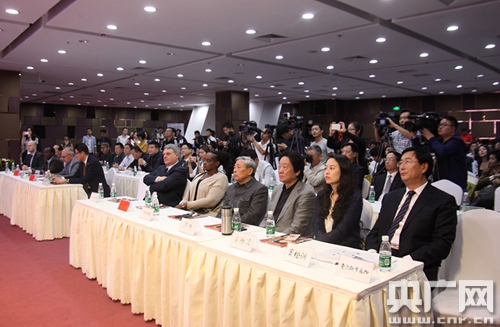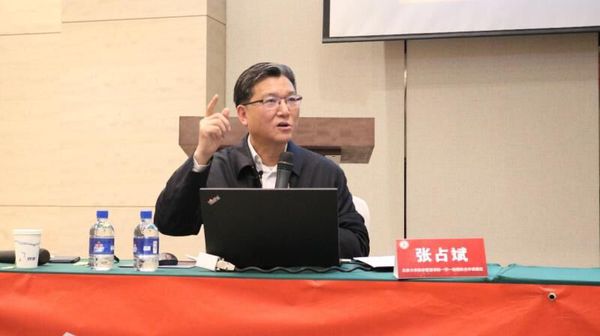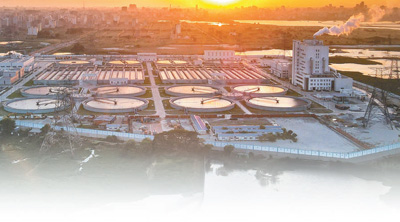China's Graphene Industry In 2025: Investment Heat Declines, Industry Reshuffle Accelerates
China's Graphene Industry In 2025: Investment Heat Declines, Industry Reshuffle Accelerates
China's graphene industry in 2025: Investment heat declines, industry reshuffle accelerates Preface Graphene, as the "king of new materials", is becoming the core driving force for global scientific and technological competition and industrial upgrading with its outstanding mechanics, electrical, thermal and optical properties.
China's graphene industry in 2025: Investment heat declines, industry reshuffle accelerates
Preface
As the "king of new materials", graphene is becoming the core driving force for global scientific and technological competition and industrial upgrading with its outstanding mechanics, electrical, thermal and optical properties. Since the "12th Five-Year Plan for the Development of New Materials Industry" in 2012, China has promoted graphene from a laboratory to a large-scale application through policy guidance, technical research and industrial chain coordination. At present, graphene's commercialization process in new energy, electronic information, biomedicine and other fields is accelerating, but high-end technology bottlenecks, lack of standard systems and international competitive pressure still restrict the industry's high-quality development.
1. Analysis of the current status of industry development
(I) The industrialization process is accelerating and application scenarios are diversified
According to the "2025-2030 China Graphene Industry In-depth Development Research and the "15th Five-Year Plan" Enterprise Investment Strategic Planning Report" of China Research Institute, China's graphene industry has formed a complete industrial chain covering raw material preparation, film/powder processing to downstream applications. In the field of new energy, graphene as an electrode material significantly improves the energy density and fast charging performance of lithium batteries, and CATL and Tesla cooperate to achieve a range of 800 kilometers; in the field of electronic information, high-end devices such as graphene flexible screens and sensors are accelerated, and the screen thickness of Samsung Z Fold 6 is only 0.07mm; in the field of biomedical medicine, graphene antibacterial dressings have been certified by the State Food and Drug Administration for Class III medical devices, and minimally invasive interventional devices have completed clinical trials. Current applications are still mainly based on "material replacement", but original breakthroughs are concentrated in cutting-edge directions such as second-generation graphene mobile phones and power batteries.
(II) Regional agglomeration effect is prominent and technical coordination is deepened
The industrial space presents a gathering trend of "one heart, one point, one area, one area": the core area of the Yangtze River Delta (Changzhou, Wuxi, etc.) relies on scientific research institutes and enterprise clusters to focus on thin film preparation and electronic device application; the Beijing-Tianjin-Hebei and Northeastern areas (Beijing, Harbin) focus on technological transformation in the military industry and aerospace fields. Regional differentiated layout optimizes resource allocation, but cross-regional technical coordination still needs to be strengthened. For example, the Graphene Innovation Center in Yueqing, Wenzhou, Zhejiang has developed a highly conductive graphene copper composite material, which is used in power equipment such as charging guns and transformers, so that transmission lines can save 1,000-2,500 degrees of electricity per kilometer per year.
(III) Dual-wheel drive of technological breakthroughs and ecological reconstruction
In recent years, major breakthroughs have been made in graphene preparation technology. The production cost of single-layer graphene by chemical vapor deposition (CVD) method has been greatly reduced, promoting mass production of flexible electrons; the discharge of wastewater from electrochemical peeling method has been reduced, and the yield has been improved, solving the environmental protection problems of traditional redox methods. At the same time, the industry has broken through key technical barriers through vertical integration of the entire chain of "materials-equipment-application". For example, Betre has overcome the continuous rolling technology of graphene films, realizes mass production of thermal conductive films and is introduced into the smartphone supply chain.
2. Macroenvironmental analysis
(I) Policy dividends continue to be released
The 14th Five-Year Plan will include graphene in the cutting-edge fields of new materials, and many places will set up special funds to support the construction of pilot platforms. For example, special industrial parks have been established in Guangdong, Jiangsu and other places, and the scale of fiscal subsidies is expected to reach 5 billion yuan. Policy orientation shifts from capacity expansion to technological breakthroughs, and promotes the construction of a patent protection network and industry standard system. In addition, national policies such as the "Catalogue of Key Development of Frontier Materials Industrialization" and other national policies clarify the needs, goals and key technologies of the graphene industry, and provide strategic guidance for industry development.
(II) Technological innovation drives industrial upgrading
Technology such as artificial intelligence, blockchain and other technologies are deeply integrated with graphene preparation technology to promote the intelligence and efficiency of production processes. For example, the AI defect repair system makes the defect rate of 8-inch graphene wafers less than 0.1%, meeting semiconductor-level needs; the blockchain traceability system is used for graphene product quality traceability, enhancing market trust. At the same time, green transformation has become an industry consensus, and green processes such as electrochemical stripping method reduce energy consumption and wastewater emissions and promote sustainable development of the industry.
(III) Global competition pattern intensifies
The global competition in graphene industry shows a pattern of "the United States and Europe lead basic research and China leads large-scale production". Europe and the United States have an advantage in basic patent layout, and multinational companies restrict downstream exports through patent barriers. Although China is leading in production capacity and market size, the number of core patents still lags behind the United States and South Korea. In the future, the industry needs to balance capacity expansion and intellectual property layout and enhance international voice.
3. Analysis of competitive landscape
(I) Leading enterprises lead technological breakthroughs
Listed companies such as Betre and Fangda Carbon occupy market share through technical cooperation and patent layout. For example, Betre's graphene thermal film is mainly used in the heat dissipation layer in panel fields such as smartphones and tablets; Fangda Carbon successfully transforms the production technology of batch graphene powders and graphene functional nonwovens, and has significant advantages in antibacterial and antiviral aspects. Emerging companies focus on sub-sectors, such as Enecon Technology, to achieve breakthroughs through differentiated competition.
(II) Enhanced synergy effect of the industrial chain
Upstream and downstream enterprises deepen coordination through vertical mergers and acquisitions and strategic cooperation. For example, Del Future Strategic Holdings Zarut Banner Graphite Mine Project has upgraded to high-end applications such as lithium battery negative electrodes and photovoltaic crucibles; Zhengtai Group jointly developed CVD graphene growth equipment with the Institute of Microsystems of the Chinese Academy of Sciences to promote the localization of the entire industrial chain of contact products. This collaborative model significantly improves product yield and market response speed.
(III) International competition and cooperation coexist
Chinese graphene companies have obtained core technology patents through overseas mergers and acquisitions to expand high-end markets in Europe and the United States. For example, a company obtains core technology patents through overseas mergers and acquisitions to expand the high-end markets in Europe and the United States. At the same time, international cooperation projects accelerate technology transfer, such as the China-Europe Graphene Joint Laboratory promoting the research and development of graphene materials for semiconductors.
4. Analysis of the development trends of the "15th Five-Year Plan" industry
(I) Technology iteration accelerates cost reduction
In the next five years, the graphene preparation process will continue to be optimized. For example, green processes such as plasma enhancement CVD and biological extraction methods reduce energy consumption; single-layer graphene growth equipment uses precise regulation of the surface coating rate of copper powder to promote the domestic production of the entire industrial chain of contact products. The decline in costs will accelerate the large-scale application of graphene in consumer electronics, new energy vehicles and other fields.
(II) Application scenarios expand to high value-added fields
The deep integration of graphene in new energy, electronic information, biomedicine and other scenarios drives technology to expand into high-value-added fields. For example, graphene composite electrode enables lithium batteries to achieve 80% fast charging in 10 minutes, and the hydrogen energy storage and transportation density is increased to 6-7wt%; graphene oxide drug-loading system improves cancer targeting efficiency by 5 times, and flexible electrodes help brain-computer interfaces to accurately treat. Scenario innovation has upgraded graphene from a single material to the core engine of multi-industry transformation.
(III) Industrial ecological reconstruction and improvement of standard system
The industry will accelerate the construction of a collaborative ecosystem of "production, education, research and use of funds" to promote cross-field integration. For example, universities and enterprises jointly build joint laboratories to promote the coordination of basic research and application development; industry associations take the lead in formulating graphene material performance testing specifications to enhance the industry's voice. At the same time, green supply chain construction has become a trend, and enterprises have improved ESG performance through photovoltaic transformation and carbon footprint disclosure.
(IV) International competition shifts from production capacity to standard
As China's graphene industry expands, the focus of international competition will shift from capacity expansion to standard setting. For example, the international standard for graphene heat dissipation film formulated by China was approved by ISO, enhancing its position in the global industrial chain. In the future, enterprises need to strengthen their participation in international standards and build competitive advantages through technical output and standard guidance.
5. Corporate investment strategy suggestions
(I) Focus on high-end materials and equipment manufacturing
It is recommended that enterprises increase their investment in research and development in the preparation of high-end materials such as single-layer graphene and heat dissipation films, and at the same time lay out the manufacturing of core equipment such as CVD graphene growth equipment and AI defect detection systems. For example, invest in the construction of a single crystal graphene production line to meet semiconductor-grade needs; develop continuous graphene film rolling technology to improve the yield of thermal conductive film.
(II) Deepen interdisciplinary technology integration
Enterprises need to explore the integration of graphene with cutting-edge technologies such as quantum sensing and brain-computer interface. For example, the development of graphene-based neural electrodes will promote the commercialization of brain-computer interface equipment; the development of graphene-diamond composite heat dissipation film will cover high-power consumption scenarios such as 5G base stations and data centers.
(III) Layout the global supply chain and market
It is recommended that enterprises obtain core technology patents through overseas mergers and acquisitions, technical cooperation, etc., and at the same time, rely on the "Belt and Road" initiative to expand emerging markets. For example, a graphene battery production base is set up in Southeast Asia to serve the local new energy vehicle industry; a R&D center is established in Europe to meet the needs of semiconductor customers.
(IV) Strengthen greening and sustainable development
Enterprises need to accelerate the research and development of green processes to reduce production energy consumption and wastewater discharge. For example, electrochemical peeling method is used to replace the traditional redox method to reduce the generation of acidic wastewater; carbon neutrality is achieved in the production link through photovoltaic transformation, meeting the ESG requirements of international customers.
(V) Participate in the formulation of industry standards and ecological construction
It is recommended that enterprises work with universities and industry associations to formulate graphene material performance testing specifications to enhance the industry's voice. For example, take the lead in formulating thermal conductivity testing standards for graphene thermal conductivity to promote domestic substitution; participate in the formulation of clinical guidelines for graphene antibacterial dressings, and accelerate the approval of medical products.
If you need to know more about the specific situation analysis of China's graphene industry reports, you can click to view the "2025-2030 China Graphene Industry In-depth Development Research and the "15th Five-Year Plan" Corporate Investment Strategic Planning Report" by China Academy of Technology.





